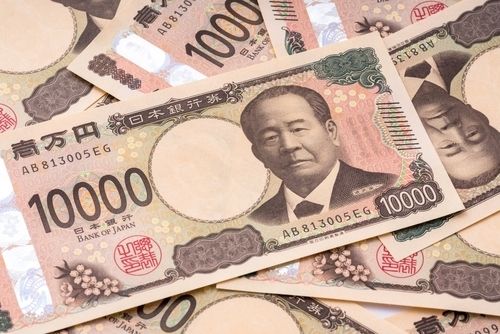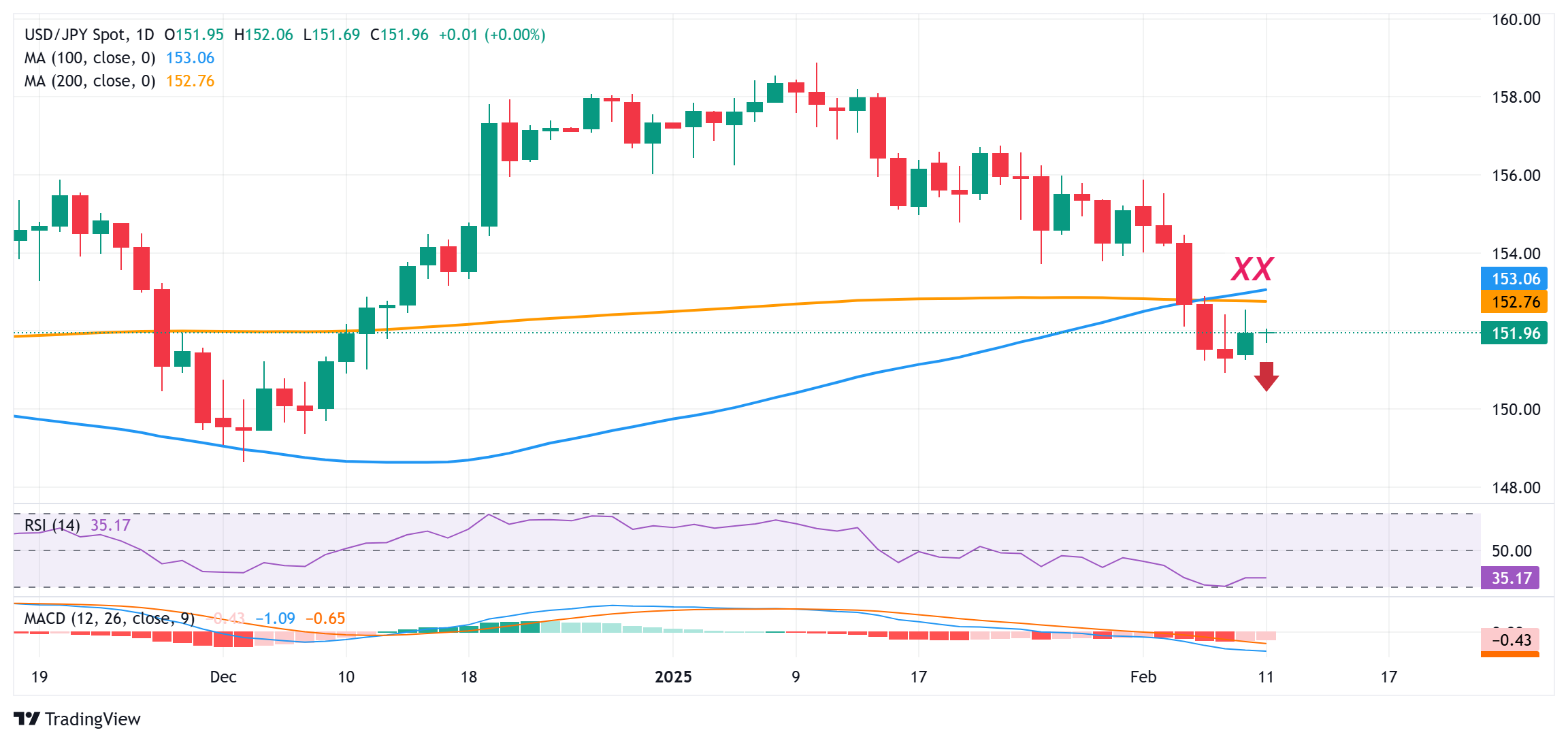
The Japanese Yen edges higher as Trump’s new tariffs boost demand for safe-haven assets.
Bets that the BoJ will hike rates further turn out to be another factor underpinning the JPY.
Expectations that the Fed could delay rate cuts benefit the USD and lend support to USD/JPY.
The Japanese Yen (JPY) attracted some safe-haven flows during the Asian session on Tuesday in reaction to US President Donald Trump's new tariffs on steel and aluminum imports. Apart from this, the Bank of Japan’s (BoJ) plans to hike interest rates further turn out to be another factor that underpins the JPY. This, in turn, keeps the USD/JPY pair below the 152.00 mark and a confluence support-breakpoint-turned-resistance retested on Monday.
Meanwhile, Trump's no-exemption tariffs on commodity imports effectively end deals with the European Union, the United Kingdom, Japan, and other countries. This endangers Japan's economic stability and acts as a headwind for the JPY. Moreover, expectations that Trump's policies would boost inflation and delay rate cuts by the Federal Reserve (Fed) lend support to the US Dollar (USD) and help limit losses for the USD/JPY pair.
Japanese Yen draws support from a combination of factors; bulls still have the upper hand
US President Donald Trump signed an order Monday that imposes a 25% tariff on imports of steel and aluminum into the US, fueling trade war fears and underpinning the safe-haven Japanese Yen.
Bank of Japan Governor Kazuo Ueda and Deputy Governor Himino recently signaled the possibility of another interest rate hike if the economy and prices align with the central bank's projections.
Adding to this, BoJ board member Naoki Tamura said last week policymakers need to bump up interest rates to 1% by the second half of the fiscal year beginning in April to fend off rising prices.
Moreover, several BoJ officials are in favor of more rate hikes as inflation is weighing on consumer spending. Japan's core consumer inflation has exceeded the BoJ's 2% target for nearly three years.
Meanwhile, worries that Trump's policies would reignite inflation in the US might force the Federal Reserve to stick to its hawkish stance on the back of a still resilient US economy and labor market.
The market focus now shifts to Fed Chair Jerome Powell's two-day congressional testimony starting this Tuesday, which might provide cues about the rate-cut path and influence the US Dollar.
Apart from this, the release of the latest US consumer inflation figures on Wednesday will determine the near-term USD trajectory and provide some meaningful impetus to the USD/JPY pair.
USD/JPY remains vulnerable while below the 152.50 confluence support breakpoint
From a technical perspective, the overnight failure near the 152.50 confluence support breakpoint now turned resistance, and the subsequent downtick favors bearish traders. Moreover, oscillators on the daily chart are holding deep in negative territory and are still away from being in the oversold zone. This, in turn, suggests that the path of least resistance for the USD/JPY pair is to the downside.
However, any further slide is more likely to find some support near the 151.30 horizontal zone ahead of the 151.00-150.90 area, or the lowest level since December 10 touched last Friday. Some follow-through selling below will reaffirm the negative bias and make the USD/JPY pair vulnerable to weaken further to the 150.00 psychological mark with some intermediate support near the 150.55 region.
On the flip side, the 152.50 confluence – comprising the 100- and the 200-day Simple Moving Averages (SMAs) – might continue to act as a strong immediate hurdle. A sustained strength beyond, however, might trigger a short-covering move and allow the USD/JPY pair to reclaim the 153.00 round figure. The recovery could extend further, though it is likely to remain capped near the 153.75 region.
* The content presented above, whether from a third party or not, is considered as general advice only. This article should not be construed as containing investment advice, investment recommendations, an offer of or solicitation for any transactions in financial instruments.



